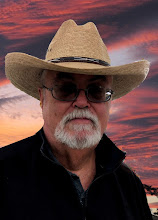New Pulp Publishing is a new small press producing primarily e-books (although printed copies are available, too), in a variety of genres. As their website puts it: “New Pulp Publishing is dedicated to delivering blistering novella length fiction in the crime, suspense, horror, science fiction, fantasy, and western venues.” Their first book, LOSER FRIENDLY, has just been released and features Miami recovery agent Jake Cassidy (a name the author of the series is also using as a pseudonym). Jake seems to be a bit of a cross between Travis McGee and Mack Bolan. He lives on a boat (a yacht, not a houseboat) and for a fee, recovers things that people have lost, usually to some bad guys. But he also has a lot of heavy weapons and is very proficient in their use. Despite those influences, Jake takes on his own character and is a very likable hero and narrator, tough but not flawless, just enough of a smart-ass to be funny, and a good guy to have on your side when you’re in trouble.
In LOSER FRIENDLY, he starts out doing a favor for an old girlfriend and finds himself trying to rescue a would-be Hollywood screenwriter who has run afoul of some mobsters. They want a script the writer has written even more than they want the guy himself, and Jake winds up having to recover it, too. Occasionally the story pauses to take a breath, but for the most part it’s very fast-paced action and very effectively written, too. I thoroughly enjoyed it.
The author behind the Jake Cassidy name is a prolific writer who has been published in a wide variety of genres (it’s not, repeat not, me; I don’t have anything to do with New Pulp Publishing except as a satisfied reader). I had a great time reading LOSER FRIENDLY and look forward to the next book in the series.
(I felt a real rush of nostalgia when I came across this post, which was first published on July 3, 2010. Everything about it is reminiscent of the early days of the Kindle boom, when e-book publishing was really the Wild West, Amazon was a boomtown, and there was plenty of money to be made. It was a far cry from the business it is today, a lot less slick maybe, but still a lot of fun. I think I knew at the time who was behind New Pulp Press and who Jake Cassidy really was, but I've slept since then, as the old saying goes. New Pulp Publishing put out one more book as far as I can tell, the sword and sorcery novel THE COLOSSUS OF MAHRASS, which was written by Mel Odom under the name R.J. Salter. Was Mel also Jake Cassidy? Maybe if he's reading this, he'll let us know. I could email him and ask him, of course, but what's the fun in that? There was another Jake Cassidy novella in the works called TWICE SHY. The cover for it is on New Pulp Publishing's website, which is still on-line although it hasn't been updated since 2011. And LOSER FRIENDLY is available on Amazon in e-book and paperback editions. The e-book is even on Kindle Unlimited!)
















